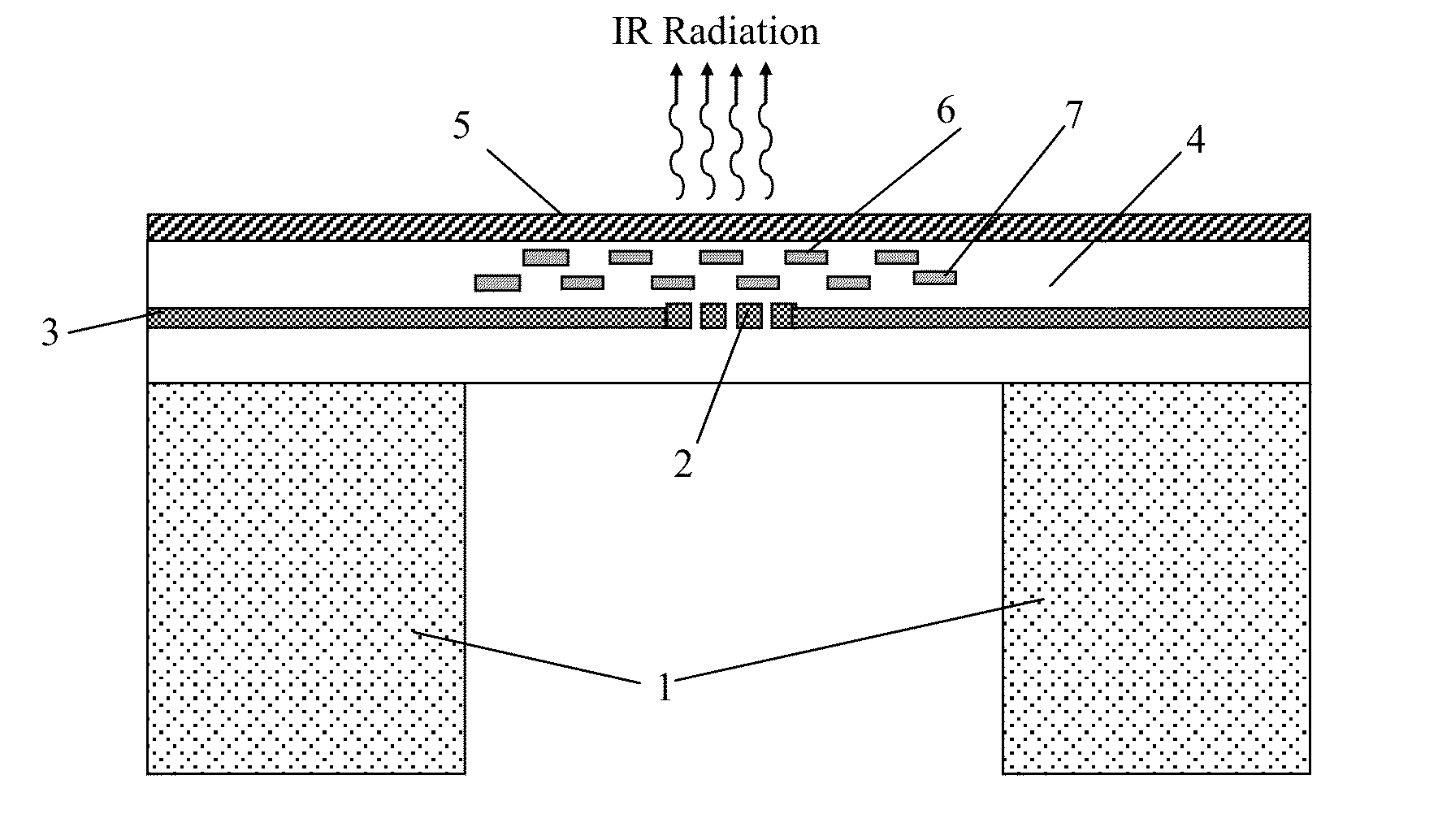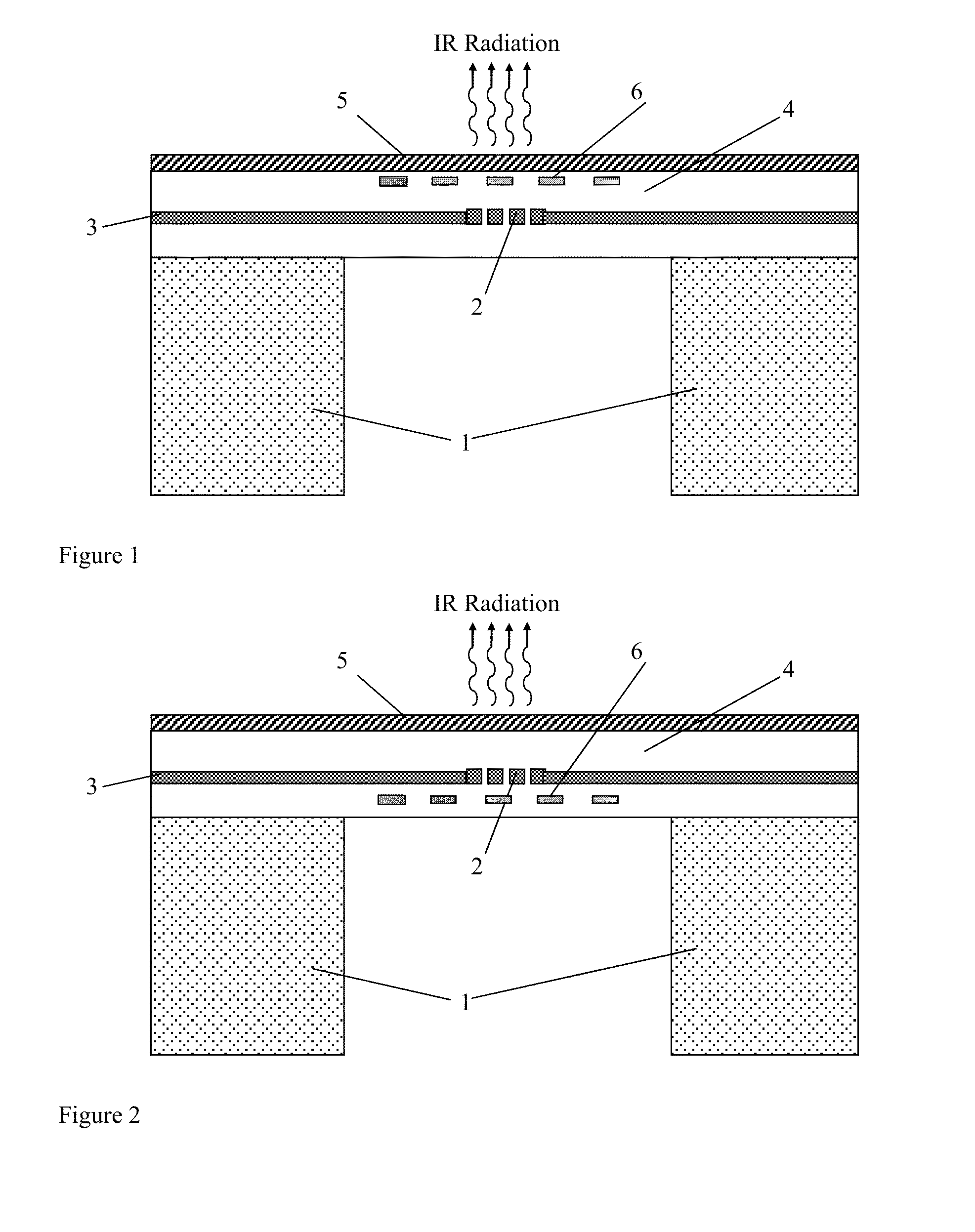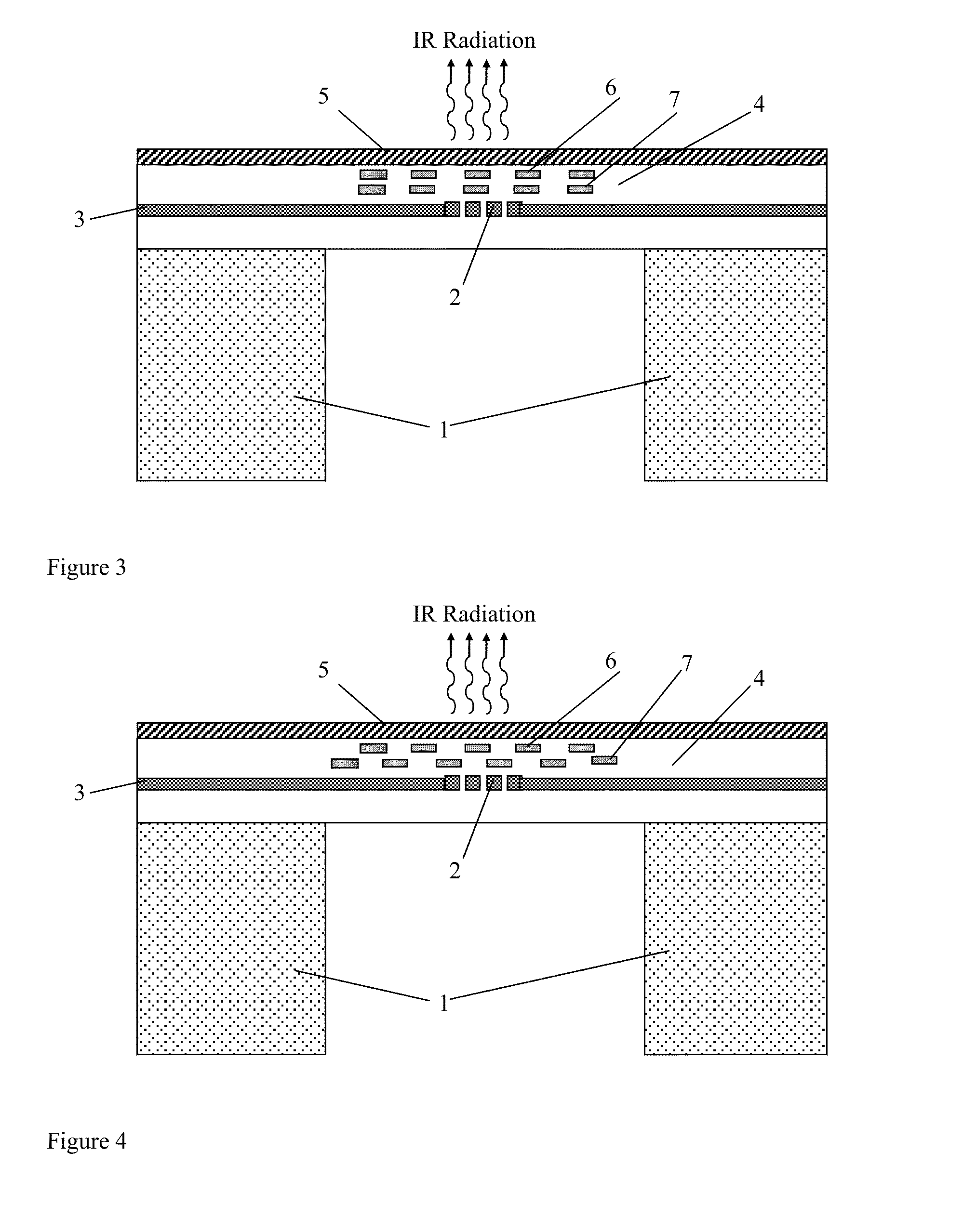Plasmonic ir devices
- Summary
- Abstract
- Description
- Claims
- Application Information
AI Technical Summary
Benefits of technology
Problems solved by technology
Method used
Image
Examples
Embodiment Construction
[0062]FIG. 1 shows a schematic cross section of an IR source with a plasmonic layer (or a patterned layer having laterally spaced structures) to enhance the IR emission. There is provided a membrane layer 4, 5 which is supported on a silicon substrate 1, the membrane layer including a dielectric layer 4 and a passivation layer 5. A tungsten resistive heater 2 is formed within the membrane 4, 5 and connected to the rest of a chip by tracks 3. The membrane includes a plasmonic layer 6 including a periodic pattern (or laterally spaced structures) and is located above the heater 2. The silicon substrate is etched by deep reactive ion etching (DRIE) which results in near vertical sidewalls. The heater 2 may be made from single crystal silicon, polysilicon, or a metal such as platinum, or a CMOS metal such as aluminium, tungsten, titanium, molybdenum or copper. The plasmonic layer has a periodic structure and may be made from polysilicon, a metal or a CMOS metal.
[0063]FIG. 2 shows a schem...
PUM
 Login to View More
Login to View More Abstract
Description
Claims
Application Information
 Login to View More
Login to View More - R&D
- Intellectual Property
- Life Sciences
- Materials
- Tech Scout
- Unparalleled Data Quality
- Higher Quality Content
- 60% Fewer Hallucinations
Browse by: Latest US Patents, China's latest patents, Technical Efficacy Thesaurus, Application Domain, Technology Topic, Popular Technical Reports.
© 2025 PatSnap. All rights reserved.Legal|Privacy policy|Modern Slavery Act Transparency Statement|Sitemap|About US| Contact US: help@patsnap.com



